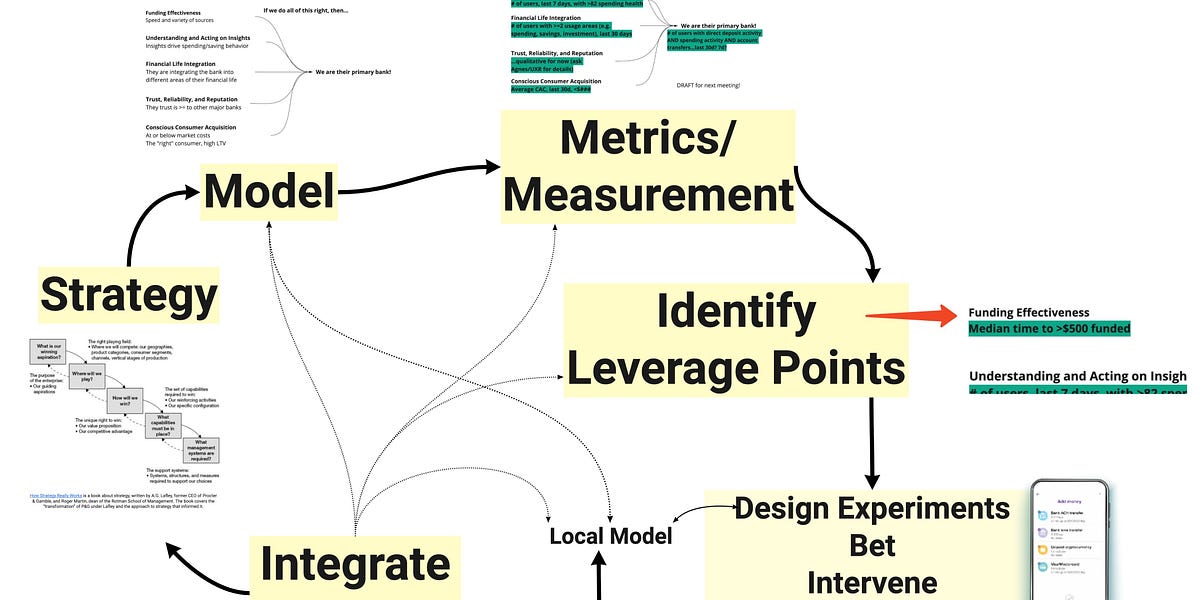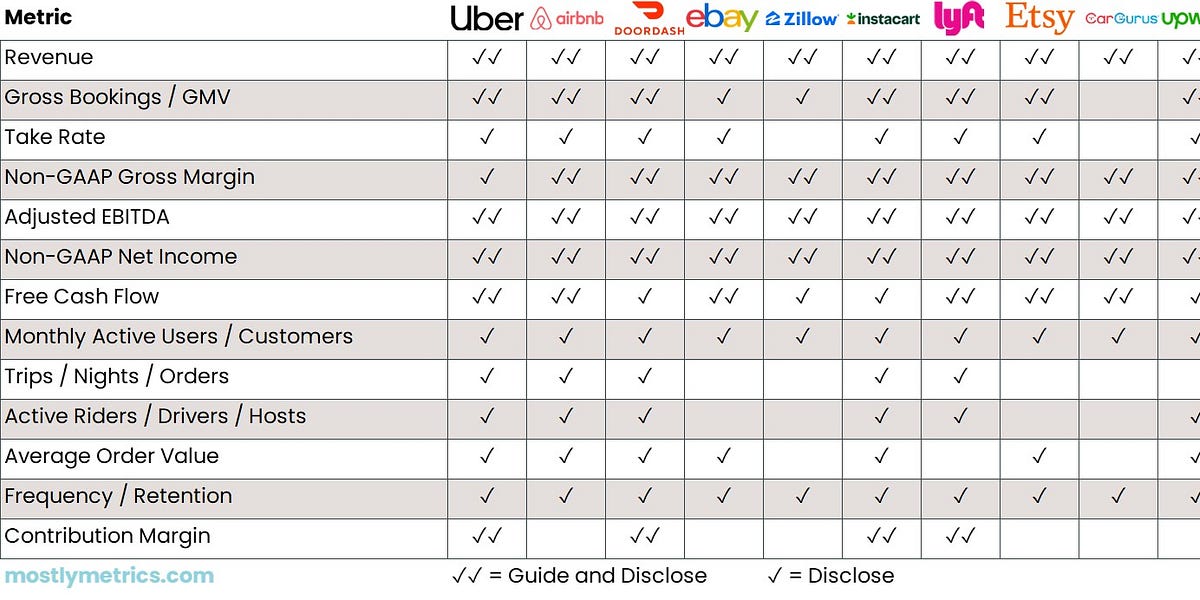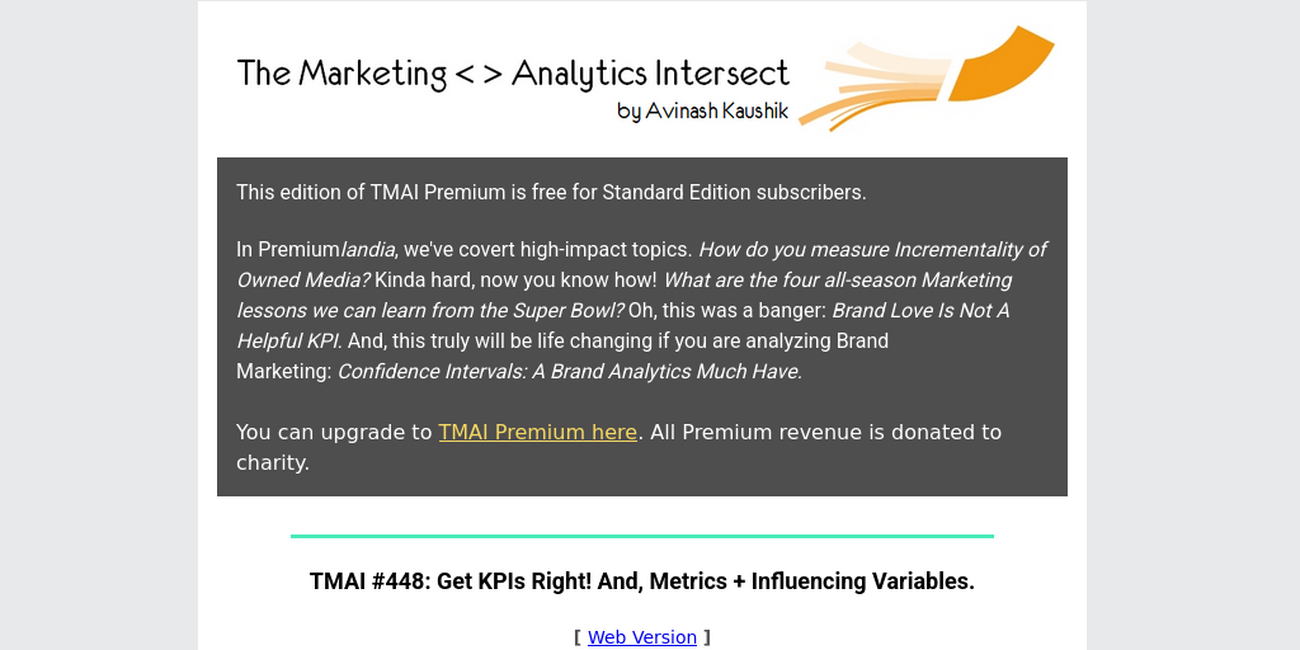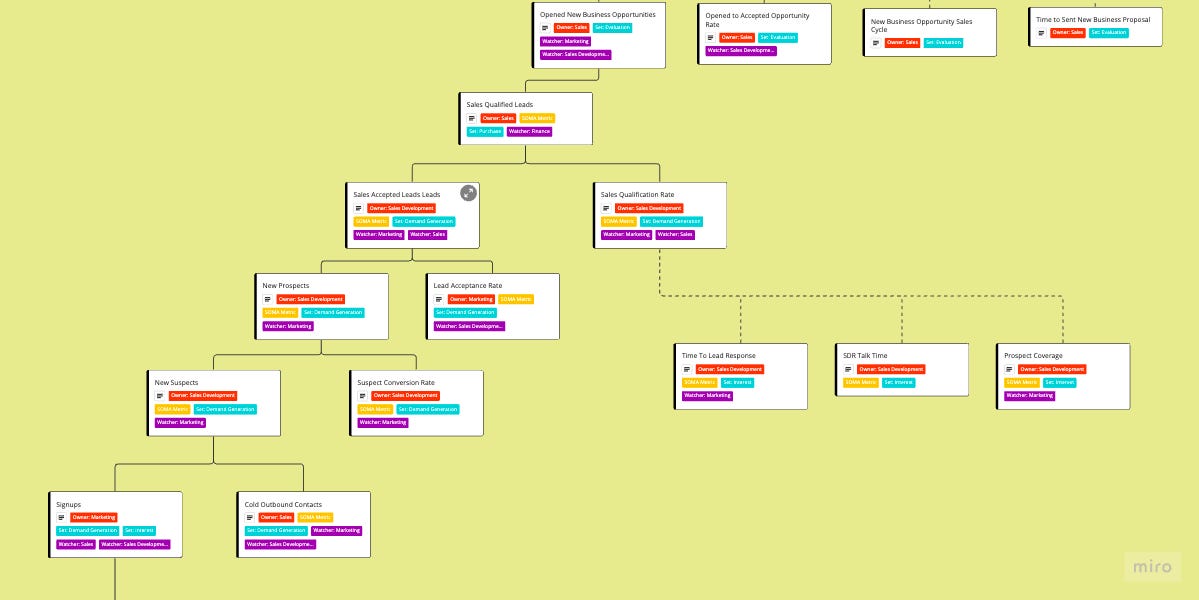This article argues that powerful ideas, even if imperfectly measured, are more useful for business decision-making than perfect measures for less impactful ideas. It discusses the importance of focusing on high-leverage metrics and acknowledging the limitations of data, rather than getting overly bogged down in pursuit of perfect measurement.
metrics
11 resources tagged with metrics
This article discusses the data-informed product cycle, which involves translating high-level strategy into models, testing hypotheses, and iterating based on data. It covers key topics like freemium, free trials, usage-based pricing, activation metrics, and product-qualified leads (PQLs).
Overview of key performance indicator (KPI) fundamentals, including definitions of leading vs. lagging, input vs. output, and actionable vs. vanity metrics. Discusses best practices for creating a consistent metric taxonomy and documentation.
Covers key revenue metrics for marketplace businesses, including gross vs. net revenue, recurring vs. non-recurring, bookings vs. billings, and other accounting-aligned measures. Explores cohort analysis, revenue waterfalls, and drivers of expansion and churn.
Foundational concepts and best practices for defining, categorizing, and documenting key performance indicators (KPIs) and other business metrics. Covers the taxonomy of leading vs. lagging, input vs. output, and actionable vs. vanity metrics, as well as establishing naming conventions and a single source of truth for metric definitions.
Discover the hidden root cause of your analytics woes and unlock unprecedented insights with this insightful guide. Learn proven techniques to diagnose and address the underlying issues that plague your data analysis, empowering you to make data-driven decisions with confidence across marketing, product, and business domains. This essential resource equips analytics professionals with the skills and strategies needed to transform their data into actionable intelligence and drive meaningful impact within their organizations.
Designing effective metrics trees is a crucial skill for analytics professionals who need to extract meaningful insights from complex data. This blog post delves into the techniques and strategies for structuring your metrics in a hierarchical, intuitive manner, enabling you to uncover hidden patterns, identify key drivers, and present data-driven recommendations that resonate with stakeholders across your organization.
Mina Mutafchieva explains how unit economics can serve as a diagnostic tool rather than just a reporting metric. She shows how to analyze customer cohorts, align spend with ROI, and avoid common pitfalls like cost-cutting without insight. Packed with real-world boardroom questions and frameworks.
Christoph Janz outlines five distinct strategies for building a $100M company, ranging from enterprise (elephants) to consumer (flies). He analyzes pricing models, customer acquisition, and go-to-market approaches to help founders identify their optimal growth path. A foundational read for SaaS entrepreneurs and startup operators.
This post by A16Z outlines the most important KPIs for two-sided marketplaces. Metrics include match rate, take rate, market depth, and concentration of supply. It offers a rigorous diagnostic toolkit for founders, investors, and operators looking to assess or pitch marketplace startups.
Jamie Sullivan and Alex Immerman use data from 60+ public tech companies to explain how each turn of the LTV:CAC ratio flows through to margins, reinvestment capacity, and ultimately valuation. A clear, numbers-backed argument for why every startup needs to understand their unit economics.








